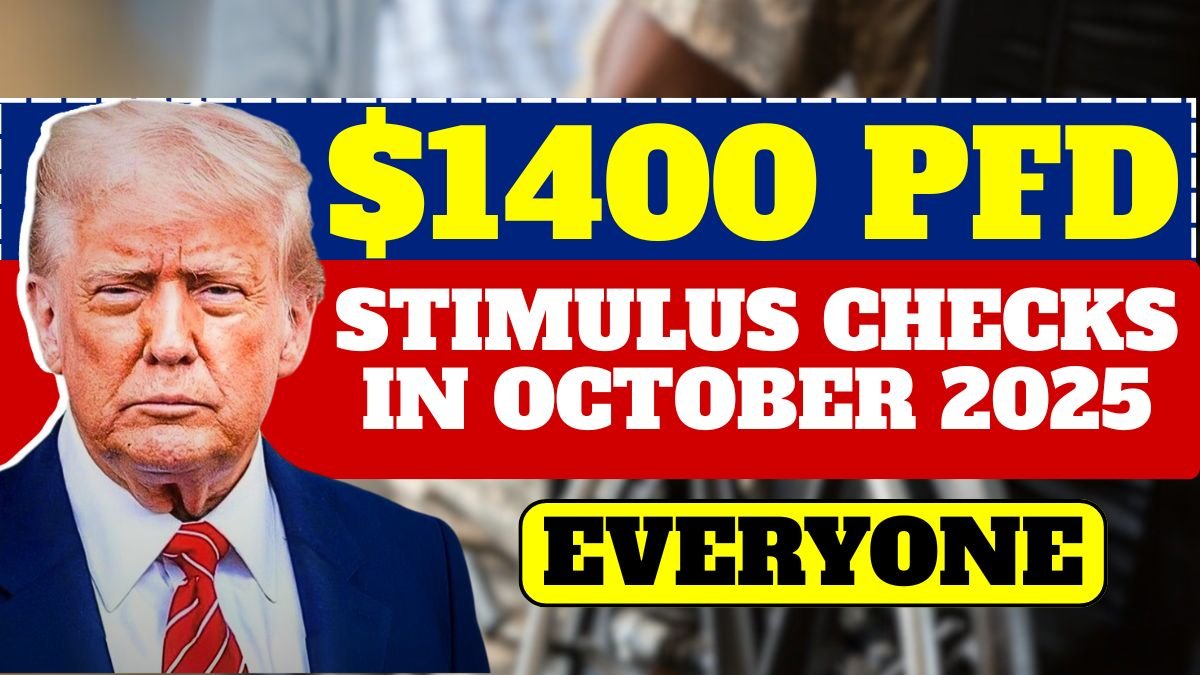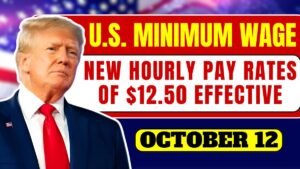$1400 PFD Stimulus Checks in October 2025: The US government has implemented many actions to support the population throughout the economic crisis, the most noteworthy being the $1400 stimulus check. This is part of a government initiative that aims to send money directly to those who are under financial pressure. The check is sent straight to your bank account, so you don’t have to go to the bank or wait for the check to be delivered to you in the mail.
Such a financial aid will be indispensable to those who might struggle to get the basic necessities of life such as rent, food, bills, or medicines. Also, the deadline for a stimulus check is of utmost importance as it tells people when the money will be available to them. Some people get it at once, while others may need to wait for their tax returns or Social Security/SSI in case the money is sent there.
$1400 Stimulus Check: Purpose and Significance
The $1400 stimulus check is one of the US government’s economic relief plans. The main goal of it is to help the citizens and families of them especially in the case of unemployment, inflation, or other financial problems. You are free to use this amount solely in accordance with your wants and priorities.
The $1400 for each individual is a direct payment from the government budget that the IRS or the Treasury Department distributes to the public. Meeting immediate needs is what this sum helps to do; however, it also enables people to be self-sufficient and to plan for the future.
IRS $1,400 Stimulus Payment 2025 Details
- Department: Social Security Administration (SSA)
- Article Subject: $1,400 PFD Stimulus Check October 2025
- Country: United States
- Amount: $1,400
- Purpose: Annual PFD benefit to residents
- Eligibility: Valid Social Security Number
- Category: Government Assistance
- Official Website: SSA.gov
For most people, this amount is transferred directly to their bank account. If you’ve filed your taxes and provided your bank information, no additional action is required. However, if your tax records are incomplete or outdated, the payment may be delayed. In such cases, it’s crucial to update your records.
Those who missed out on the $1,400 stimulus check the first time may receive it as a “Recovery Rebate Credit” on their next tax return.
Eligibility for the $1,400 PFD Stimulus Check
There are certain government guidelines for this stimulus check. These guidelines are based on your income, tax returns, and legal status. The main eligibility criteria are:
- You must be a U.S. citizen or legal resident and have a Social Security number.
- You must have filed taxes for the previous year.
- If you are single, your annual income must be less than $75,000 to receive the full $1,400 amount.
- Parents or guardians can also receive money for each child or dependent listed on their tax returns.
- People receiving certain Social Security, SSI, SSDI, or VA benefits are also eligible, even if they haven’t filed taxes.
The Impact of the $1,400 PFD Stimulus Check
The amount of money has made life easier for American families in a lot of ways. One of the main ways that it helps is by giving a relief from the financial burden to the people. In fact, if somebody lost his/her job or is on a very low income, this check will make it possible for him/her to live in a house, eat, and take care of his/her health.
Timely money reception is also extremely essential. It not only removes anxiety but also enables people to budget their money. Some people use the money to free themselves from debt, while some choose to use it to buy what they have needed for a long time. Local businesses also benefit from this as when people have money to spend, local shops and service providers directly get the money.
Such amount is what helps families buy needed supplies, clothing, or food. There might be people who will save the money for possible future emergencies. To put it simply, this stimulus check becomes a source of the national and individual economy.
Payment Date and Important Information
The $1,400 stimulus check is given to people in different batches on different dates. There are three factors that define your payment date – the date of filing your tax returns, the way you chose to receive the payment, and whether you get other benefits like SSI or Social Security. The IRS usually releases a timetable showing the different payment batches and which ones will be done on which dates.
- Those who filed their taxes early and provided their bank information receive the funds first.
- Payments are then made to Social Security, SSI, and SSDI beneficiaries.
- Payments are sent to those who don’t have a bank account.
Payments can sometimes be delayed due to a lack of tax information or delays in identity verification. Therefore, it’s always best to check the status on the IRS website. The IRS’s “Get My Payment” tool can be used to see when your payment will arrive. If the tool shows “Payment Status Not Available,” it means your tax return is in processing or there’s a delay.
Another important fact is that this $1,400 stimulus is tax-free. You don’t have to pay any taxes when you receive it, and it doesn’t deduct from government assistance programs like food stamps or housing assistance.
Conclusion
The $1,400 stimulus check 2025 is not only a means of financial relief, but also an opportunity for Americans to become self-reliant, avoid financial stress, and provide for their families. This is the government’s effort to ensure citizens have access to cash quickly and safely.
This amount of money impacts not only the individual, but also the local and national economy. When citizens spend it, it impacts the economy.
FAQs:
Q. What is the $1400 Stimulus Check?
A. It is a government payment designed to provide financial relief to individuals and families during times of need, such as job loss, high expenses, or other financial difficulties.
Q. Who is eligible?
A. U.S. citizens or legal residents with a valid Social Security number who filed taxes for the previous year. Income limits apply: single filers must earn under $75,000 to receive the full $1400. Parents or guardians also receive money for each child or dependent. Some Social Security, SSI, SSDI, or VA benefit recipients may also qualify.
Q. How is it paid?
A. Most recipients receive direct deposits to their bank accounts if banking information is on file. Others may get paper checks or debit cards.



